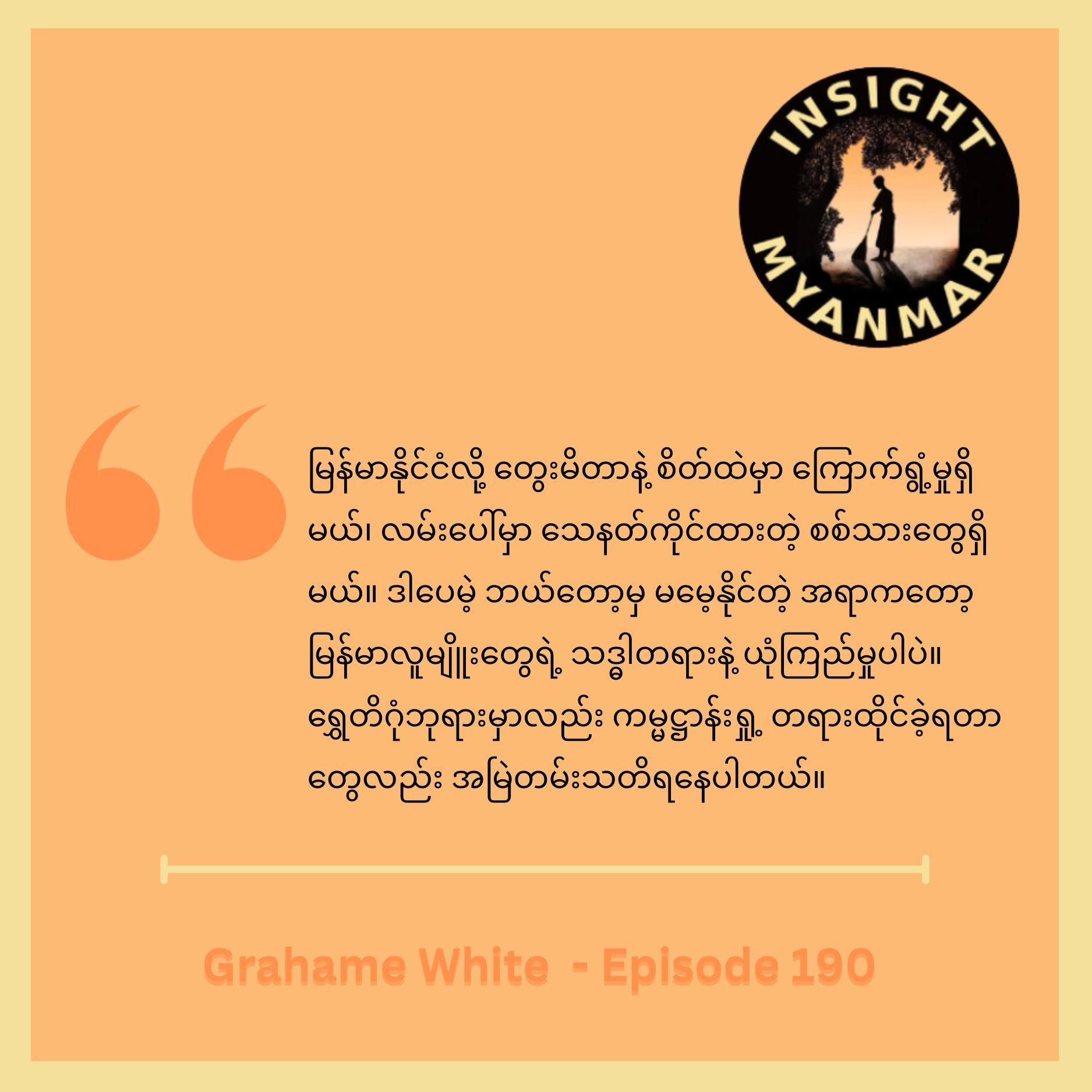Saddhā Amidst Struggle in Burma
“My impression of Burma was that there was a certain underlying fear. You had to be careful, that's for sure. You’d walk around the streets a little bit, and there'd be soldiers with guns standing at various places. But the thing that was the most impressive was their saddhā, their faith. You’d go to Shwedagon Pagoda or the meditation center, and the faith, that generosity, just the interest in the Buddha's teachings, it was phenomenal! And I loved meditating there.”
Grahame White embarked on his spiritual journey in an unconventional way in 1966. As Australia began conscripting young men for the Vietnam War, he escaped with his surfboard to South Africa, spending time riding waves and working off and on for 15 months. Subsequently, he moved to England and then, seeking beautiful coastlines, ended up in Biarritz, France. There, he encountered Hermann Hesse's book, Siddhartha, which spurred him on to start a meditation practice. In 1970, he headed to Asia, eventually ordaining as a monk in Bodhgaya, India, where the Buddha attained enlightenment. After sitting the second-ever course conducted by S.N. Goenka, he crossed paths with such influential figures as Sharon Salzberg, Munindra, Joseph Goldstein, Carol Wilson and Jack Kornfield.
During his first visit to Burma in 1973, Grahame had a profound experience studying meditation under Chan Mya Myaing Sayadaw U Janaka. Later, he was accompanied Mahasi Sayadaw on a pilgrimage to Bodhgaya in 1979, and the great monk impressed him with the remarkable simplicity and determination of his practice. That period left an indelible mark on Grahame, strengthening his appreciation of how Burmese society supported a thriving monastic culture. Grahame would go on to bring the Mahasi practice to Australia, and remains deeply grateful for his years in the Golden Land.
In the quote above, Grahame provides a poignant reflection on the dichotomy of life in Burma, juxtaposing an oppressive political climate with the resilience of spiritual practice. He paints a picture of his Burmese Buddhist friends and acquaintances grappling with authoritarian control and civil unrest, and yet having an unwavering faith and dedication to Buddhist teachings, despite that country’s many challenges. This points to a powerful commitment to remaining on a spiritual path even during times of instability, while underlying the human capacity to seek inner balance, even in the most challenging circumstances.
Grahame’s observation illustrates Burma's complex socio-political landscape and the enduring spirit of its people, and it is something we see continues to this day, three years since the attempted military takeover. Despite the harrowing challenges in their way, the people's commitment to democracy remains undeterred. Their saddhā, or faith – both in one’s religion as well as the overriding principles of freedom and self-determination – fuels the ongoing civil disobedience and protests. This steadfastness amid political repression is a testament to the unbreakable spirit of the Burmese people.

